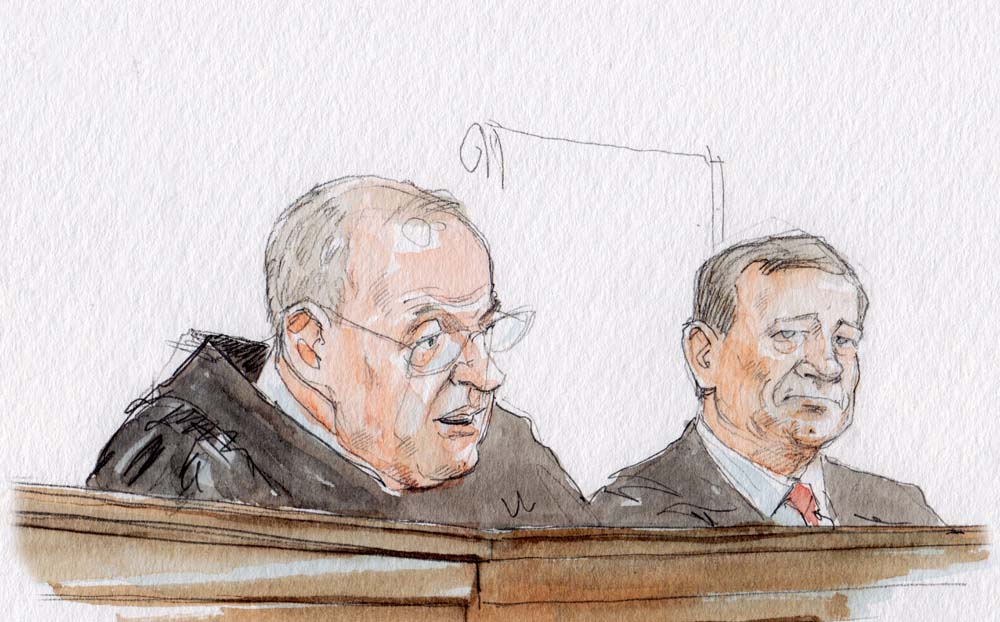Symposium: The solicitor general, the shadow docket and the Kennedy effect

on Oct 22, 2020 at 2:00 pm

This article is part of a symposium on the Supreme Court’s shadow docket.
Steve Vladeck (@steve_vladeck) is a professor of law at the University of Texas School of Law. His teaching and research focus on federal jurisdiction, constitutional law (especially the separation of powers), national security law and military justice.
For as long as the Supreme Court has existed, it’s had a “shadow docket” to record everything other than the justices’ formal rulings in argued cases. Indeed, the very first action the court ever took, on Feb. 1, 1790, might count as such an order — on the first day that the justices were supposed to meet, the court’s first clerk, John Tucker, embarrassingly recorded the absence of a quorum. And as Professor Ross Davies explained in 2006, from 1802 to 1839, Congress even required a single justice to come back to Washington each August for a “rump” session — to dispose of, among other things, any pending procedural matters that did not require the full court’s attention. (As Davies notes, Congress’ motives in forcing a justice back to Washington in the middle of the summer may not have been entirely benign.)
The shadow docket produced its fair share of headlines in the 20th century, too — from Justice William O. Douglas’ last-minute stay of the executions of Julius and Ethel Rosenberg in 1953, to the Cambodia bombing litigation 20 years later, to at least the first round of Bush v. Gore. But for all of these historical anecdotes, there are at least two respects in which the shadow docket has truly exploded in the last few years: the number of requests for emergency relief from the solicitor general, specifically; and the public divisiveness of the justices’ responses — both in those cases and others.
The data are striking. Three and a half years into the Trump administration, the solicitor general has sought emergency relief — to stay a lower-court ruling or lift a lower-court stay — on 36 separate occasions, including 14 alone during the October 2019 term. That’s in contrast to the previous 16 years — under Presidents George W. Bush and Barack Obama — when the solicitor general sought such relief eight times, or once every other year. And as I wrote last November in an essay for the Harvard Law Review, the justices have largely acquiesced: 22 of the solicitor general’s first 35 emergency applications were granted in full or in part; only eight have been denied in full; and only half of those eight were denied with prejudice. Indeed, emergency applications have become such a significant part of the solicitor general’s caseload that the office recently cited that uptick in explaining why it had added a fifth deputy.
The uptick has not just produced more rulings from the court; it’s also produced more division. In the 22 cases in which the court has granted at least partial relief to the government, at least two justices have publicly noted dissents 17 times, and nine of the orders have publicly been 5-4. (One of the quirks of the shadow docket is that we don’t usually know the actual vote count — unless four justices publicly note dissents.) In contrast, no justice publicly noted a dissent on any of the four occasions that the court granted emergency relief to the government between 2001 and 2017.
As I noted last fall, there are any number of competing explanations for these upticks — for the significant increase in the frequency with which the solicitor general is seeking such relief, and the concomitant increase in how often the court is acquiescing. By now, at least, it is clear that the trend can’t be pegged entirely, or even mostly, to the uptick in so-called “nationwide injunctions”; too many of the applications are in cases where such relief is not at issue. Instead, as I’ve suggested, it seems likely that there is now a majority of the court in support of a subtle doctrinal shift that Chief Justice John Roberts espoused in an influential in-chambers opinion in 2012 — that the government suffers an irreparable harm weighing in favor of relief whenever its policies are enjoined, and without regard to a balancing of the equities. In those circumstances, the government’s entitlement to emergency relief will, for better or worse, rise and fall entirely on the justices’ predictions of how they are likely to rule on the merits. Given the current composition of the court, it’s hardly surprising that a Republican administration would fare relatively well under that standard. Nor is it surprising that the Office of the Solicitor General would be uniquely well-positioned to notice — and take advantage of — such a subtle doctrinal shift.
But none of this explains the radical increase in the (public) divisiveness of these rulings. Indeed, across the universe of emergency applications (including those from parties other than the federal government), the court handed down 11 rulings last term that were (publicly) 5-4, on top of nine during the 2018-19 term. In contrast, only two shadow docket rulings during the 2017-18 term (the first full term with President Donald Trump in office) produced public 5-4 splits. That timing suggests, at least circumstantially, that this pattern is the result not just of an aggressive approach toward emergency relief from the Trump administration, but also of a significant development on the court at the end of the 2017-18 term — the retirement of Justice Anthony Kennedy.
Indeed, as I wrote last April, “because of both the substance of his views and the extent to which they were the median position on the Supreme Court for the better part of the last 12 years, Kennedy was often a moderating influence on his colleagues — who usually needed his vote in order to reach a judgment in the more politically divisive cases, and who needed his analytical support in order to form a majority to endorse a controlling legal rationale.” Back then, I was writing about the increasing acerbity of the justices’ separate opinions in merits cases, but it seems just as convincing an explanation for the newfound polarization of the shadow docket, as well. If so, then it seems that both the growth of the shadow docket and its divisiveness may well be here to stay — regardless of what happens at the polls this November.


